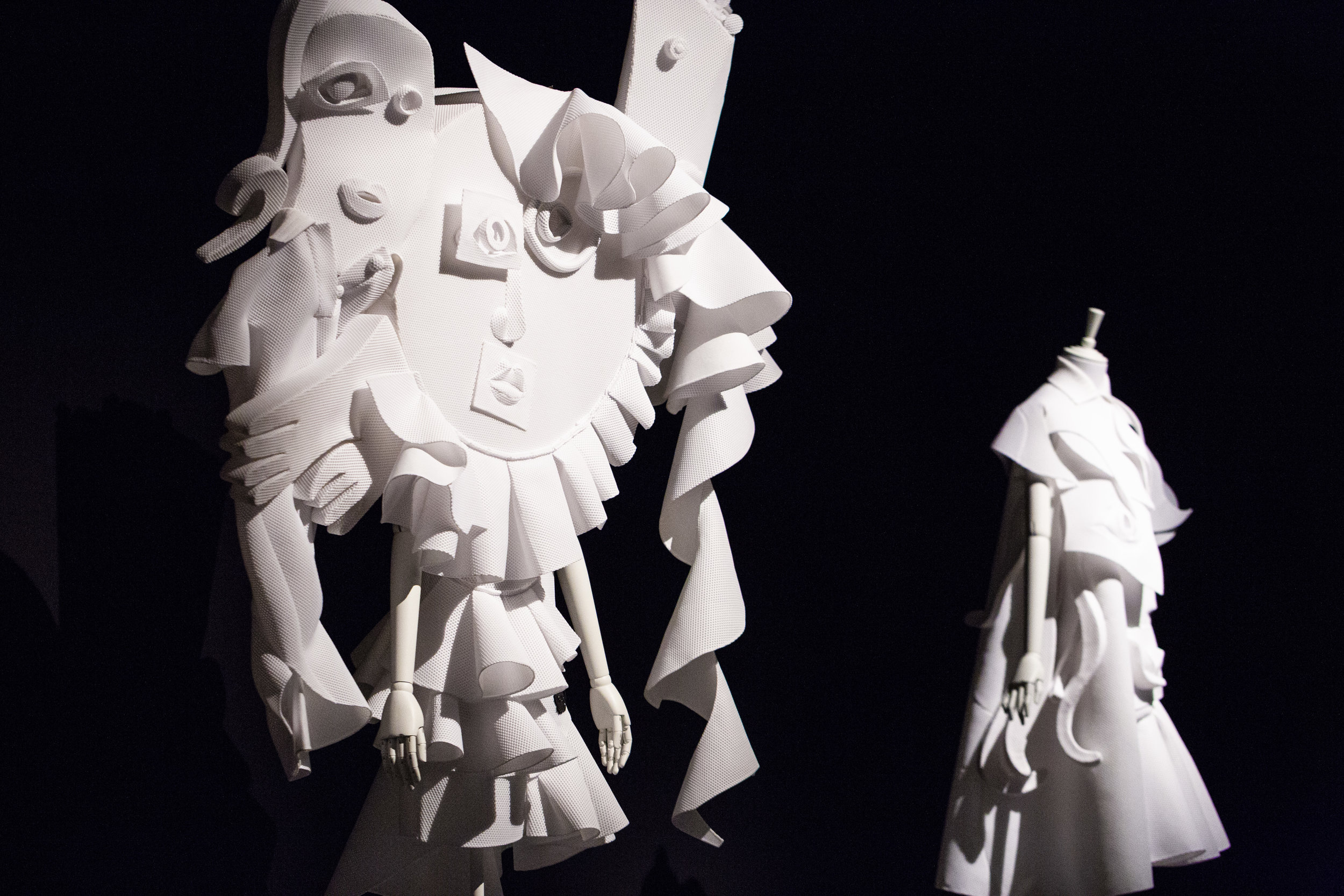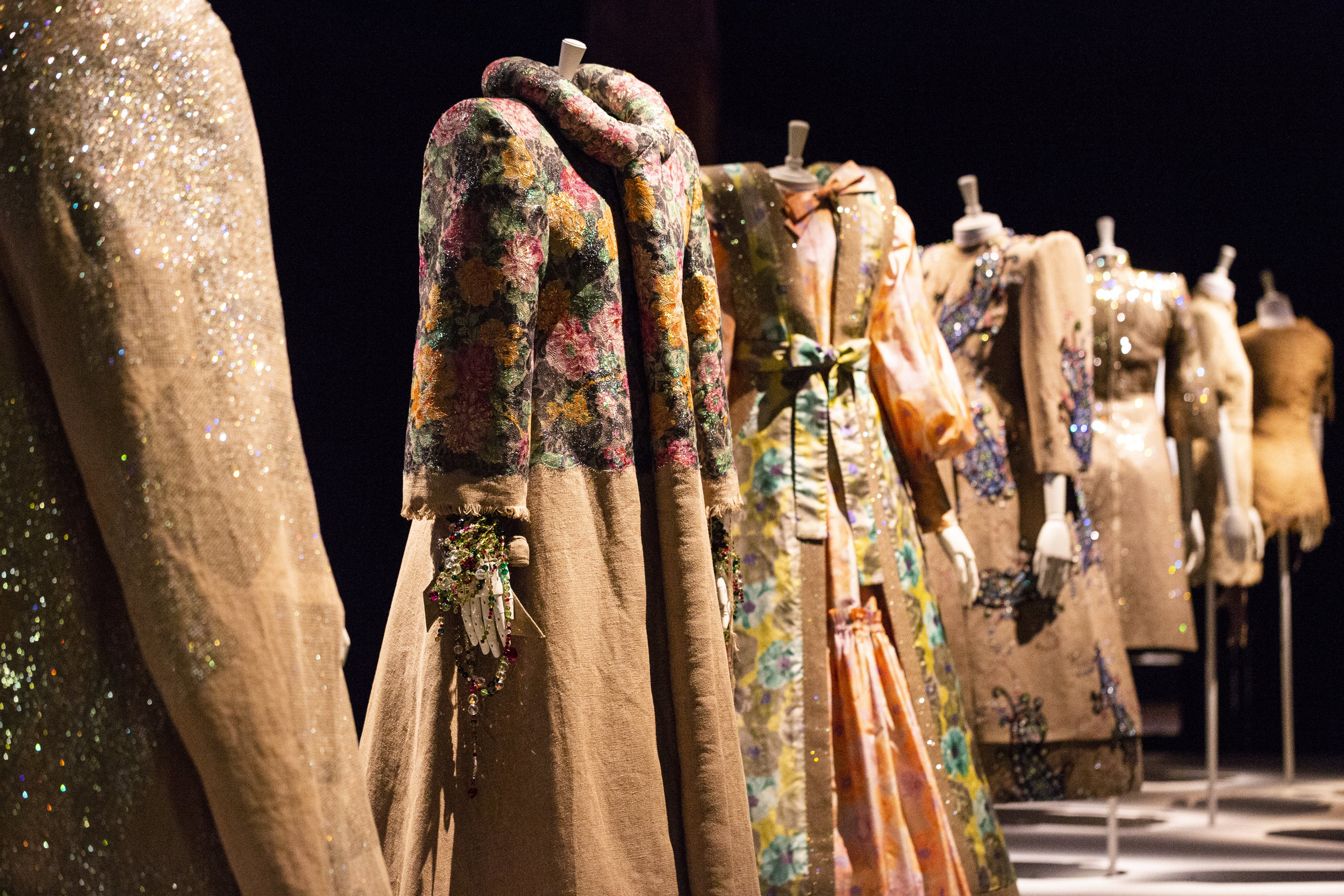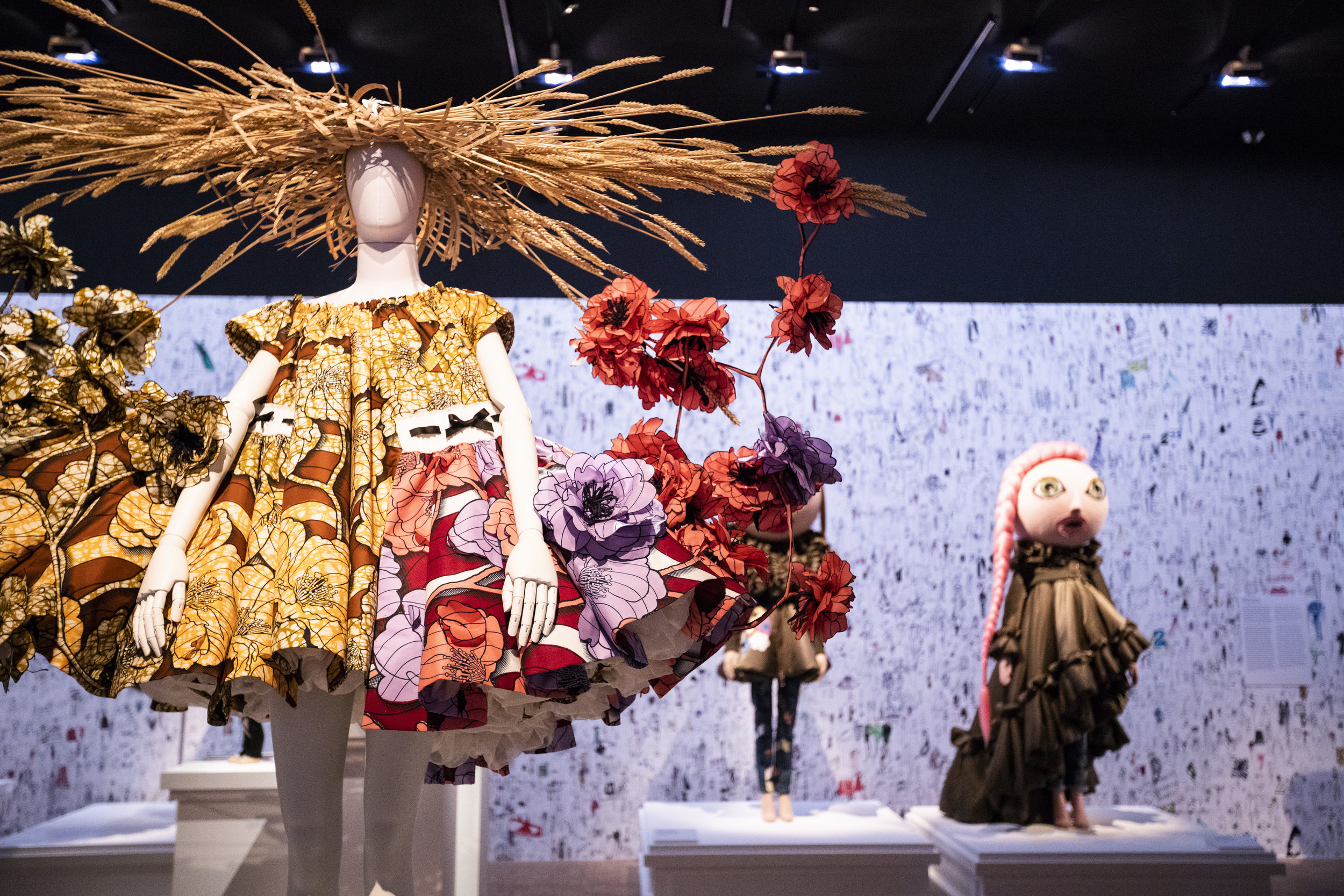Exhibition Review: Viktor & Rolf: Fashion Artists 25 Years
The Kunsthal (Rotterdam), May 27-September 30, 2018
The Kunsthal museum in Rotterdam offers Viktor Horsting and Roelf Snoeren the possibility to celebrate the twenty-fifth anniversary of their fashion house in their own country with a retrospective exhibition focused on their creative experiments and fascinating ability to cross boundaries among artistic disciplines. As leading cultural institution, the Kunsthal confirms with this initiative the designers’ significant contribution to the artistic heritage of the Netherlands, in orchestration with previous exhibitions dedicated to Viktor & Rolf in other Dutch museums, in Utrecht and Groningen, and it gives new breath to the debate on the definition of fashion.
Based on the exhibition of 2016 at the National Gallery of Victoria in Melbourne and curated by Thierry-Maxime Loriot, Viktor & Rolf: Fashion Artists 25 Years investigates the duo´s conception of “wearable art” and aims to challenge their sometimes conflicting definitions of fashion. The viewing experience is guided by characteristic themes with collections explored through one or more pieces. The path is unified by custom wallpaper, specially made for the exhibition and digitally composed of hundreds of hand-drawn sketches by the designers.
The exhibition opens with one doll, Hana, wearing a scaled down version of a dress from the Bedtime Story collection (AW 2005). These artisanal dolls with porcelain heads, human hair and bodies realized with the papier-mâché technique are produced since 2006 by a Belgian manufacturer and dressed with one piece from each new collection of Viktor & Rolf. After the Launch exhibition in 1996 in Amsterdam, in which they presented a dream vision with miniature elements in a miniature set, and after the The House of Viktor & Rolf exhibition in 2008 at the Barbican Art Gallery in London, in which they reproduced their creations from past collections worn by dolls in a six-meter-high dolls house, the designers decided to use dolls as a way to maintain their creations after the end of the season, like an attempt to freeze time. This retrospective reflects the role of the time in the duo´s activity, who are always looking for an approach that allows spectators to read their work, outside the fast pace of fashion catwalks.
A second moment of reflection comes with the installation of Russian Doll (AW 1999), taken from a collection whose pieces were originally placed as layers on top of each other during the fashion show, and that has now been “opened” in a linear stage with moving mannequins, each of them wearing one of the layers. The original presentation, reproduced in a video, was defined as an artistic performance, a sort of transformational assemblage of increasingly larger-sized couture dresses made by various fabrics of different techniques, and sometimes so rigid as to become architectural. These textiles are to be compared also with the two pieces in the exhibition from the Red Carpet collection (AS 2014/2015), literally realized with carpet fabrics, reminding us of Viktor & Rolf’s concept-driven creative viewpoint, in which wearability is not the main concern because clothes and fabrics are objects in a conceptual process.
Clothes are thus just part of the story that Viktor & Rolf want to tell: various elements such as models’ hair and make-up, lights, music, choreographies come together in a presentation that unifies and harmonizes them in a twenty-minute show where models live their own performance, being part of the composition body/garments. A connection, the latter, investigated in Bombon collection (SS 2014), where the borders between skin and clothes are pushed to create surreal effects, with garments as second skin, in a color palette of skin tones and pinks, suggesting the idea of wearable nudity.
“The demanding schedule of fashion and its international presentations have represented a challenge from the beginning, feeding the conflictive image of the designers belonging to the industry while criticizing its consumption logic.”
Emblematic at the Kunsthal is the choice to include a sample from the NO collection (AW 1996/1997), self-portrait of Viktor & Rolf and symbol of their own state of mind, in a moment of rebellion against the fashion´s fast pace. A protest represented also by the picture of the model walking around Paris for the On Strike collection (AW 1996/1997). The demanding schedule of fashion and its international presentations have represented a challenge from the beginning, feeding the conflictive image of the designers belonging to the industry while criticizing its consumption logic. The creations of Viktor & Rolf look for a large public, larger than the niche of professionals of the fashion shows, one reason why they decided to present their work in art galleries, thinking that exhibitions last longer and address more people. In 1996, for the first time, Viktor & Rolf presented their collection L´Apparence du Vide in an art gallery, focusing on the importance of telling a story and building a different relationship with audience.
The dress on show from Boulevard of Broken Dreams (SS 2017) also speaks about time, but in this instance the focus is the potential of materials: here they use fabrics from past collections as basis for the new dresses, made with the artistic technique of the collage, in a perspective of deconstruction and reconstruction, and according to a conscious and sustainable design philosophy. The recycling of old materials regards also Vagabonds (AW 2016/2017), whose piece in the Kunsthal shows materials taken from the past and brought to the future, resulting in a sort of textile pointillisme.
Viktor & Rolf’s research on materials and their possibilities can be obsessive, as represented in this retrospective, like the mono-material of Surreal (SS 2018), where satin is the only protagonist, or like the mono-piece of Shirt Symphony (SS 2011), or furthermore the studies of the effects of lights and colors on textiles in White (AW 2001/2002), recalling the methodic approach used in Claude Monet´s series, such as Les Meules. But the pair’s range of materials goes beyond textiles, and shows how different media can take part into the fashion universe. A proof is the extract from Van Gogh Girls (SS 2015), a sculptural creation that combines abstract volumes with organic elements, including three dimensional flowers.
This sculptural side of their activity is highlighted in the three pieces from Performance of Sculptures (SS 2016), where Viktor & Rolf investigate the relationship between wearer and clothing, arriving even to consume the body of the models in the most extreme dresses, obscuring their head inside polo shirts assembled with surreal cubist portraits, suggesting various perspectives of observation. Another example of the sculptural approach of Viktor & Rolf appears in one of the last moments of the exhibition, in a video reproduction of the Zen Garden show (AW 2013/2014), where twenty conceptual pieces create during the presentation another unique piece, a tableau vivant in which the models form sculptural groups, like masses of rocks, dressed and undressed on stage by the designers themselves, who are actors in a machine-like process, precise in timing and movements, of assembling and disassembling.
Shows serve as the entire communication system of Viktor & Rolf, and fashion is the language they use to communicate, but the challenge to the world of art is constant, as visually represented by the pieces taken from Wearable Art (AW 2015/2016), collection in whose presentation the designers appeared on stage to remove the “clothes/paintings” from the walls and put them on the models, and then back from the models to the walls, in a circle. An episode that sees Viktor & Rolf having a fundamental role in the performance as in a theatrical presentation, recalling the importance that theatre has for the designers, honored in this exhibition with the stage costumes created for theatrical spectacles (Der Freischütz, 2009) and the ones for the singer and actress Madonna (Tears of Clown, 2016).
Viktor Horsting and Roelf Snoeren use fashion as means of communication of their ideas according to an approach that is at the same time conceptual and materialist. Conceptual due to their creative process beginning with an idea, to which all elements follow, and materialist because their language is made of textiles, fabrics, colors, shapes, elements explored in their limits and possibilities. Through the path of this exhibition, an awareness of Viktor & Rolf surfaces, and their auto-definition as “fashion artists” can be confirmed. The retrospective shows how their work can transcend the parameters of fashion and create connections among disciplines, in a balance between creative and commercial interests.





